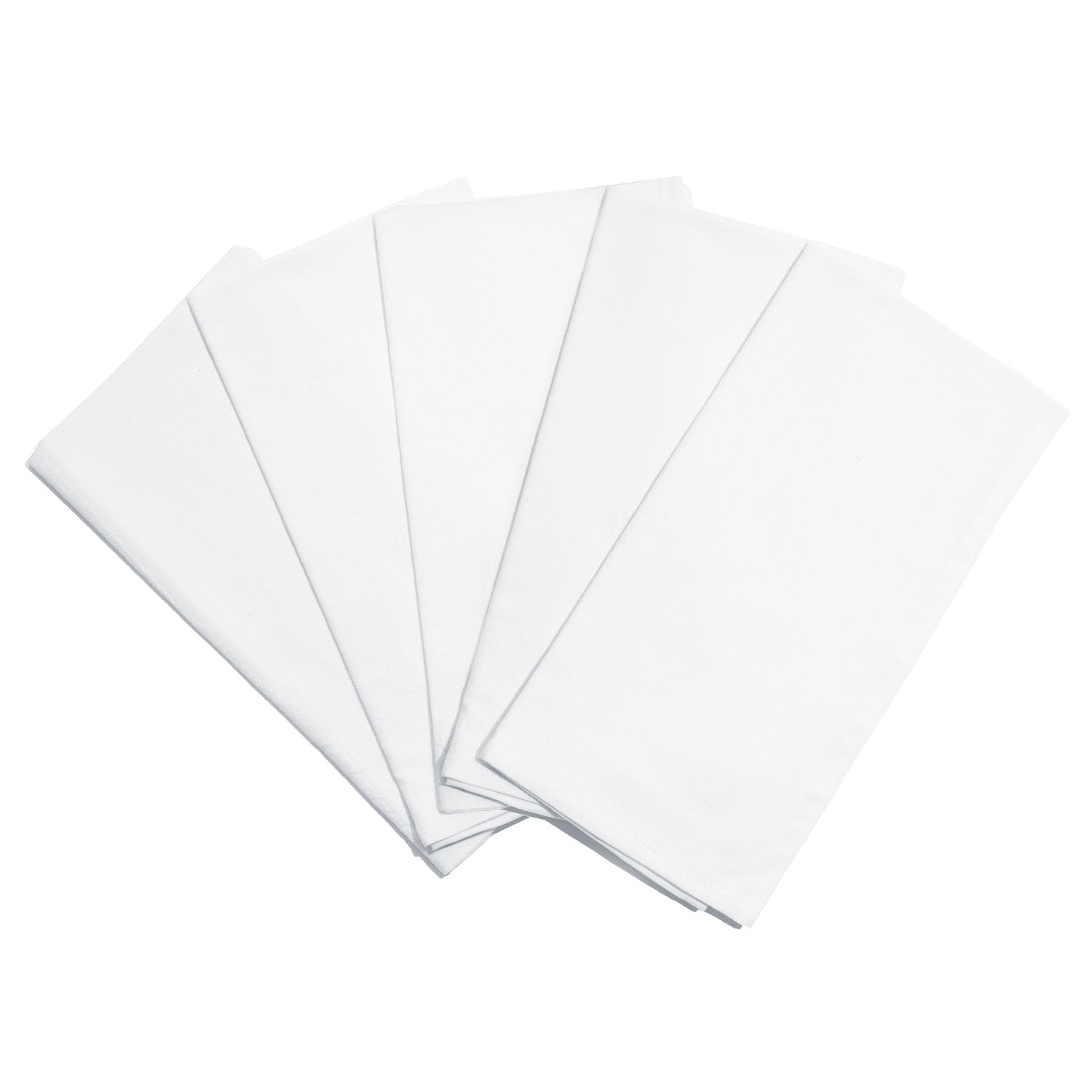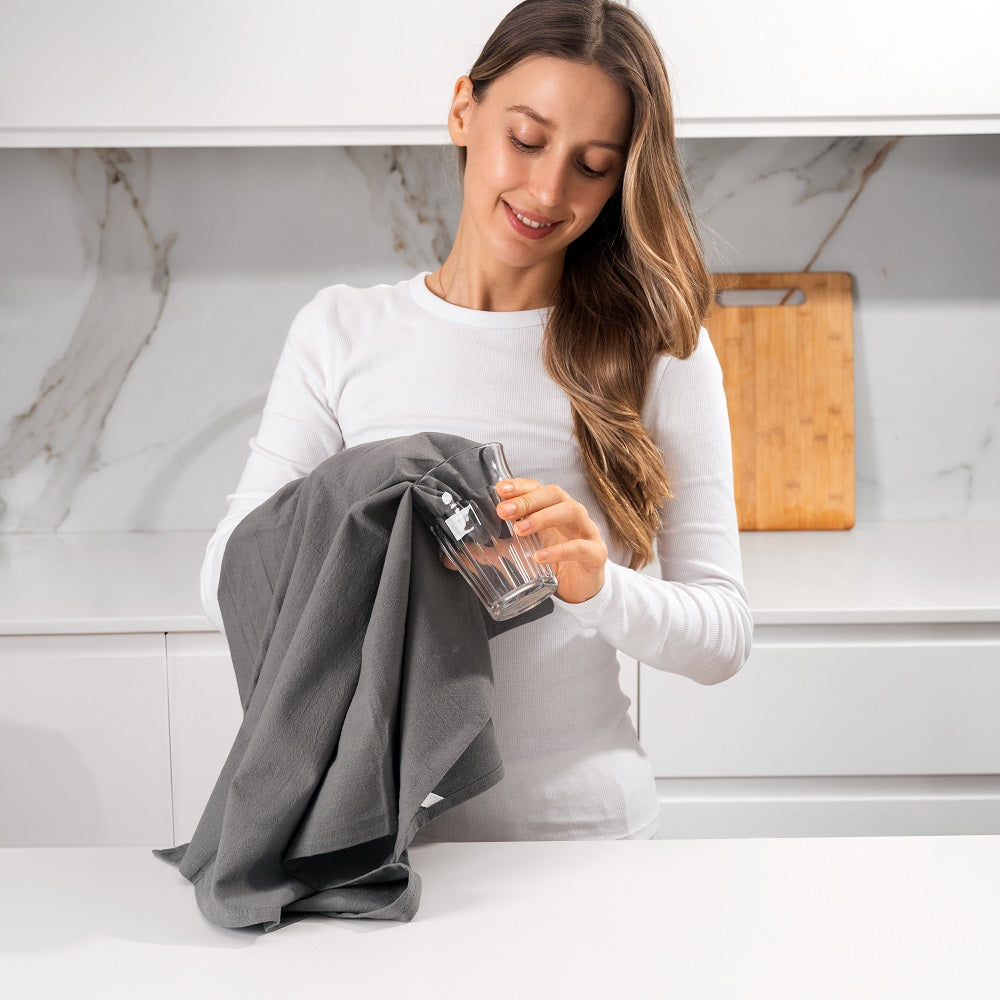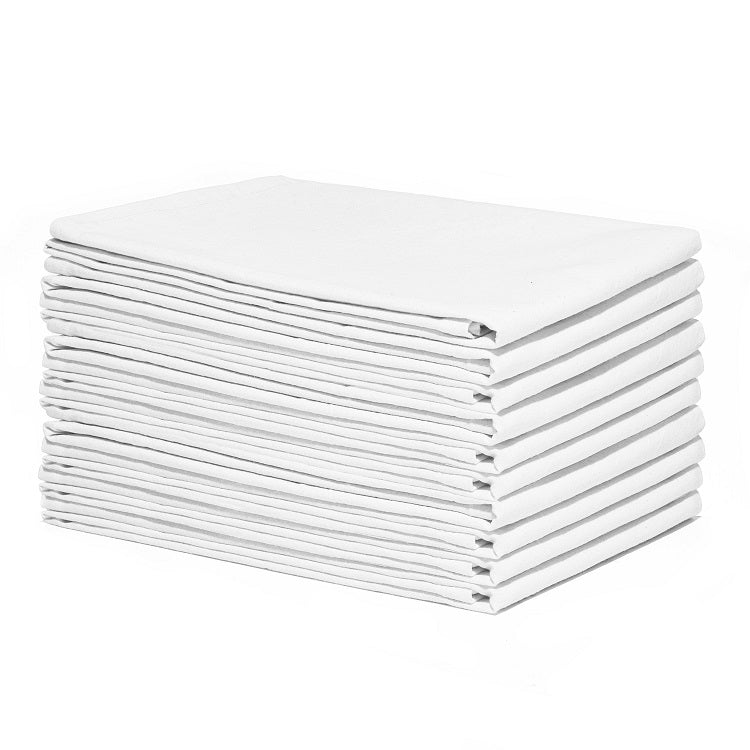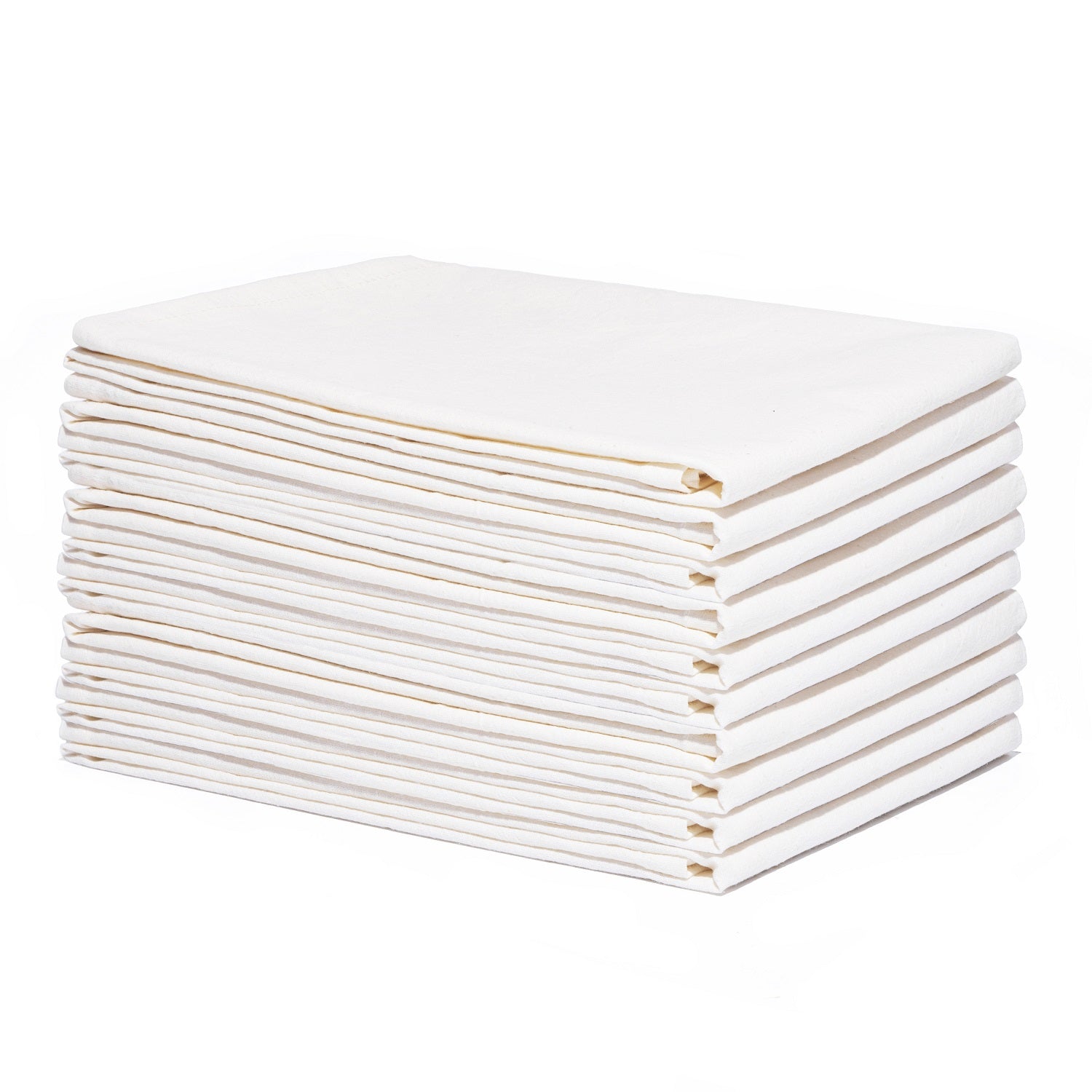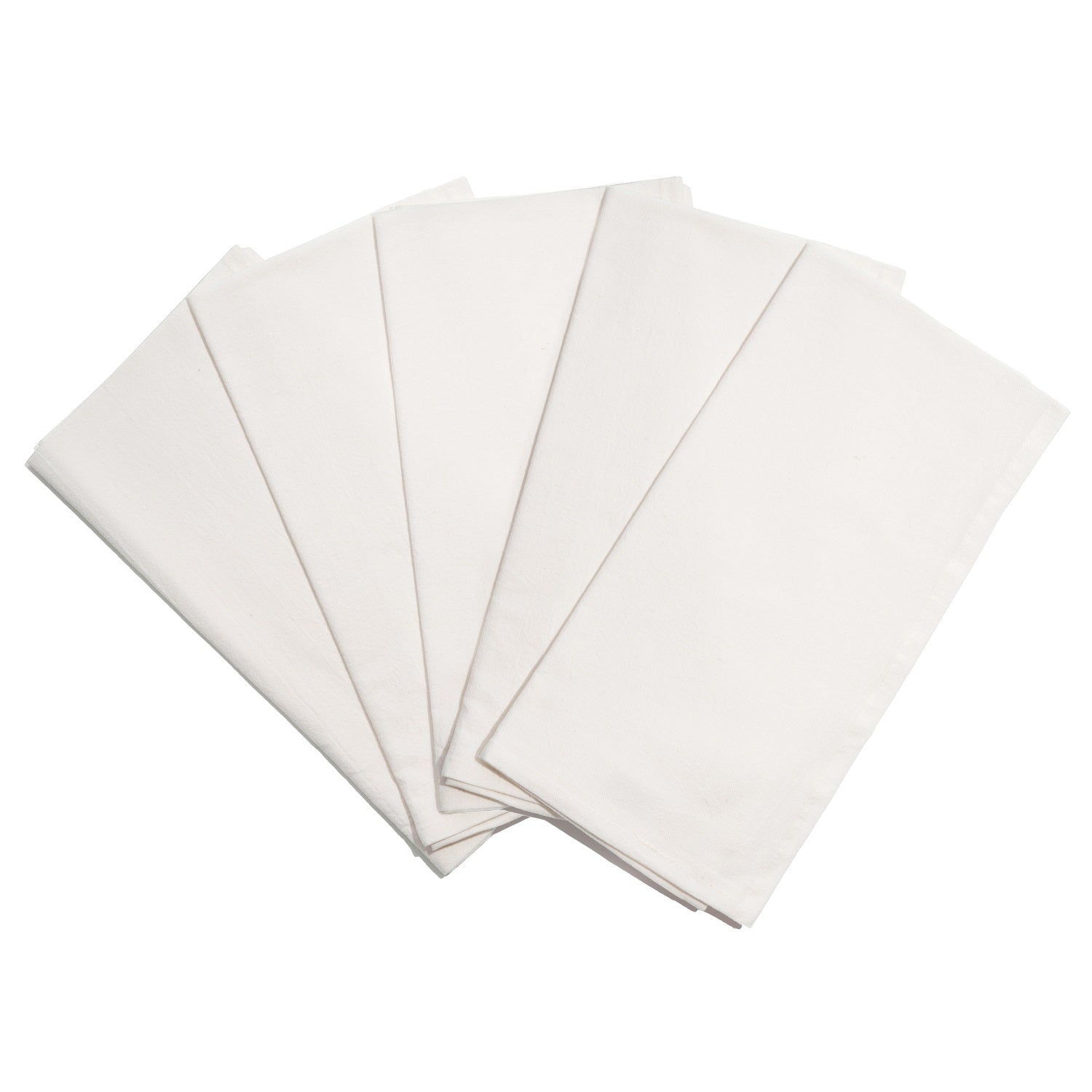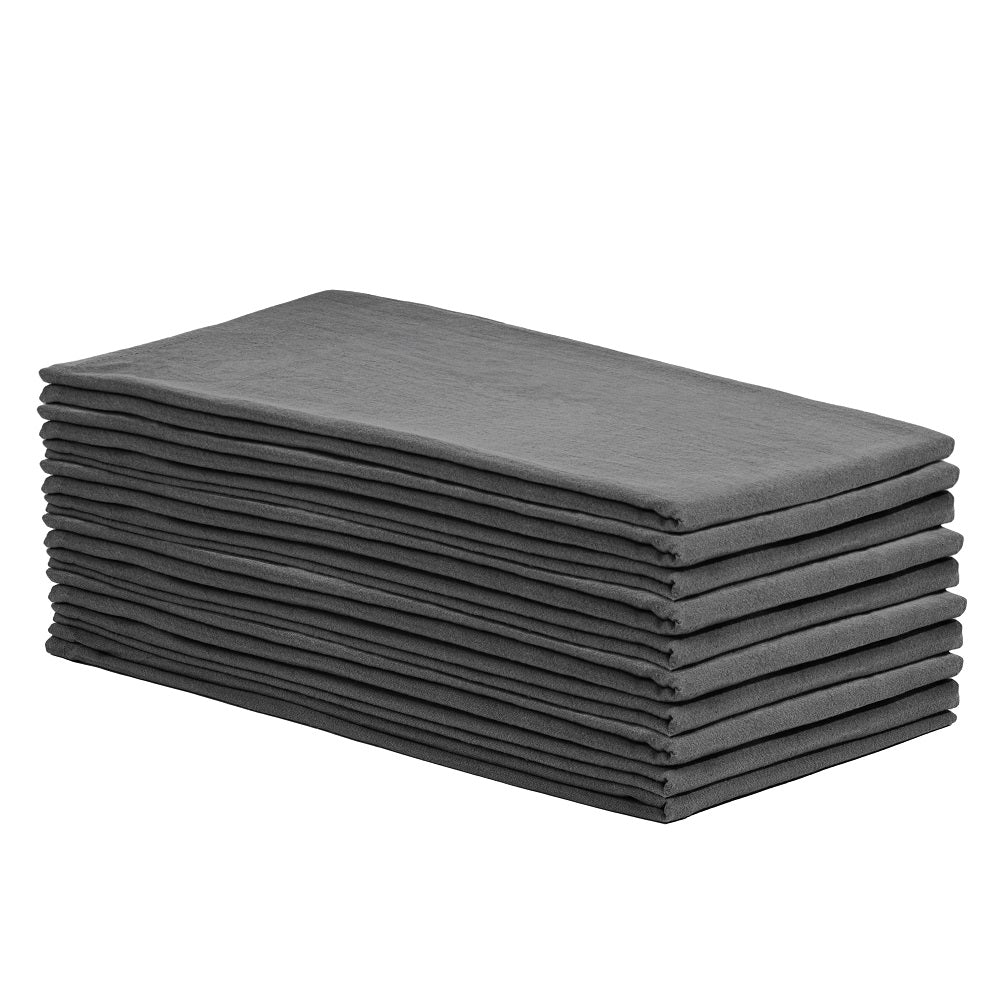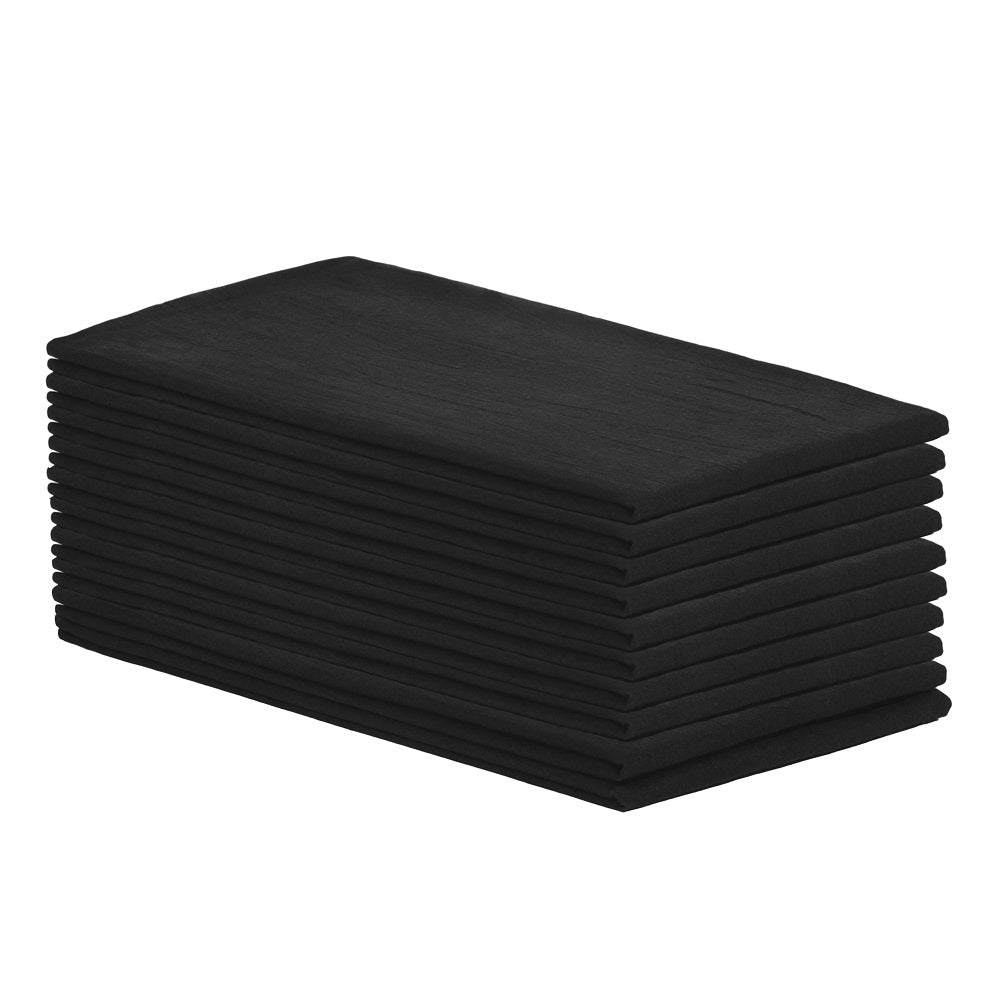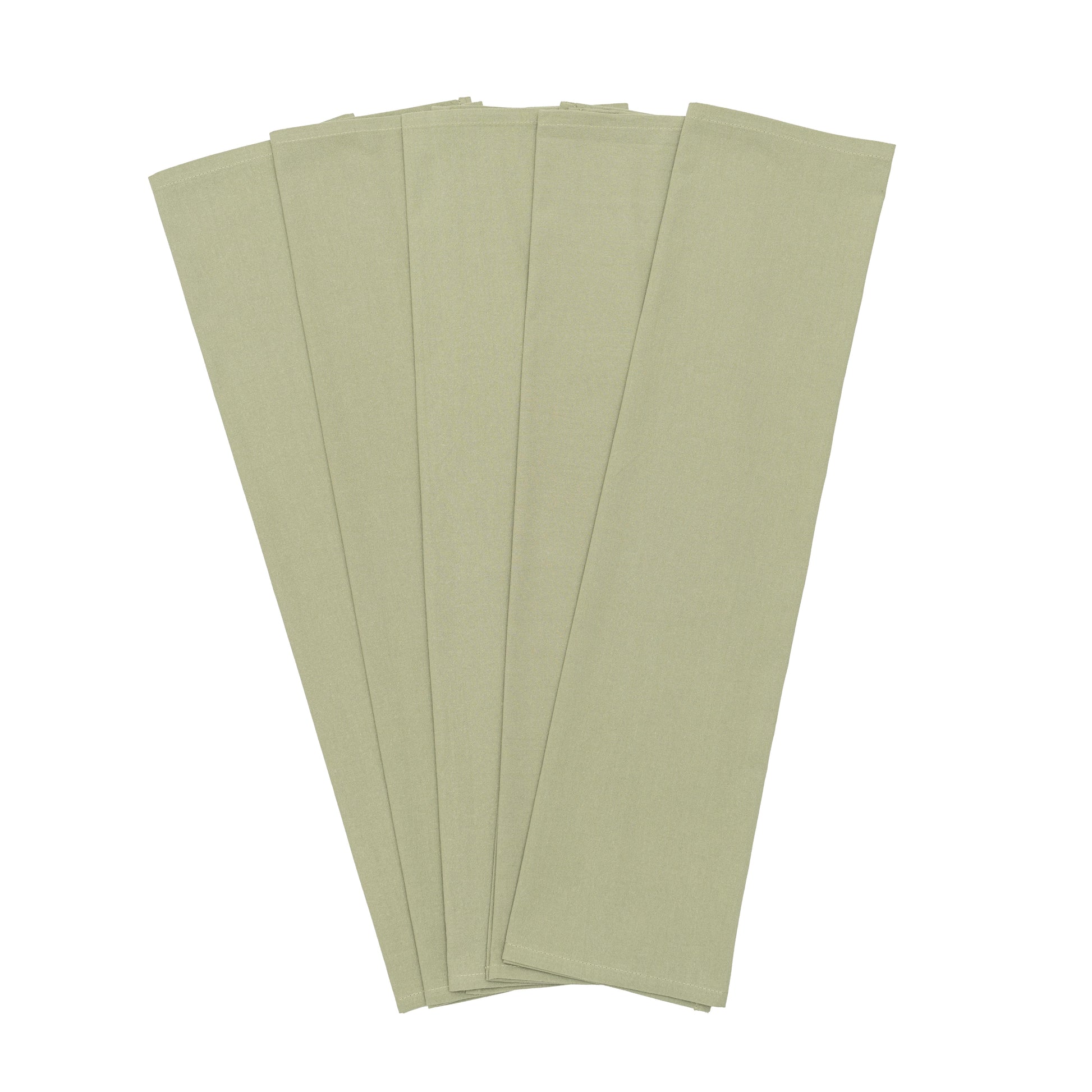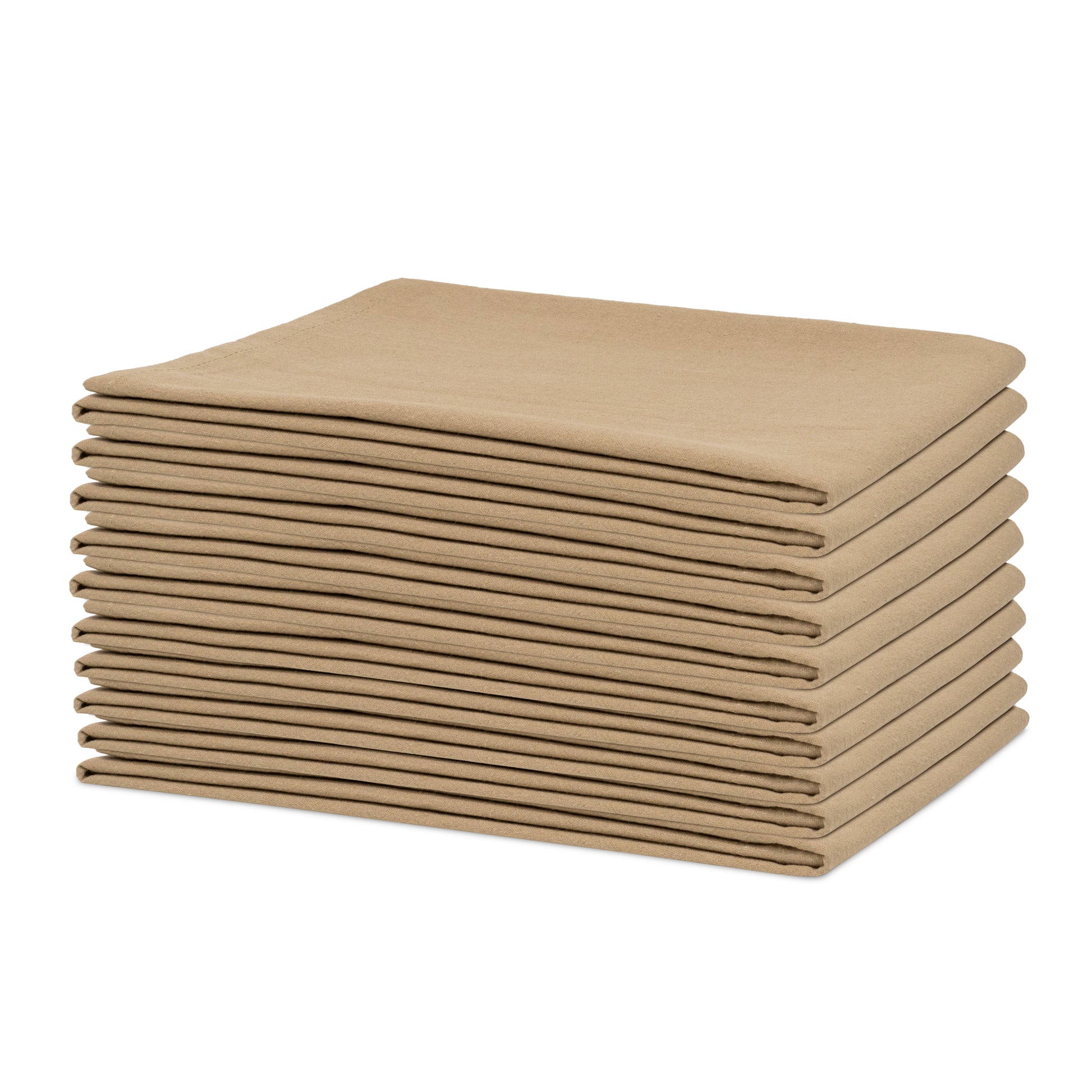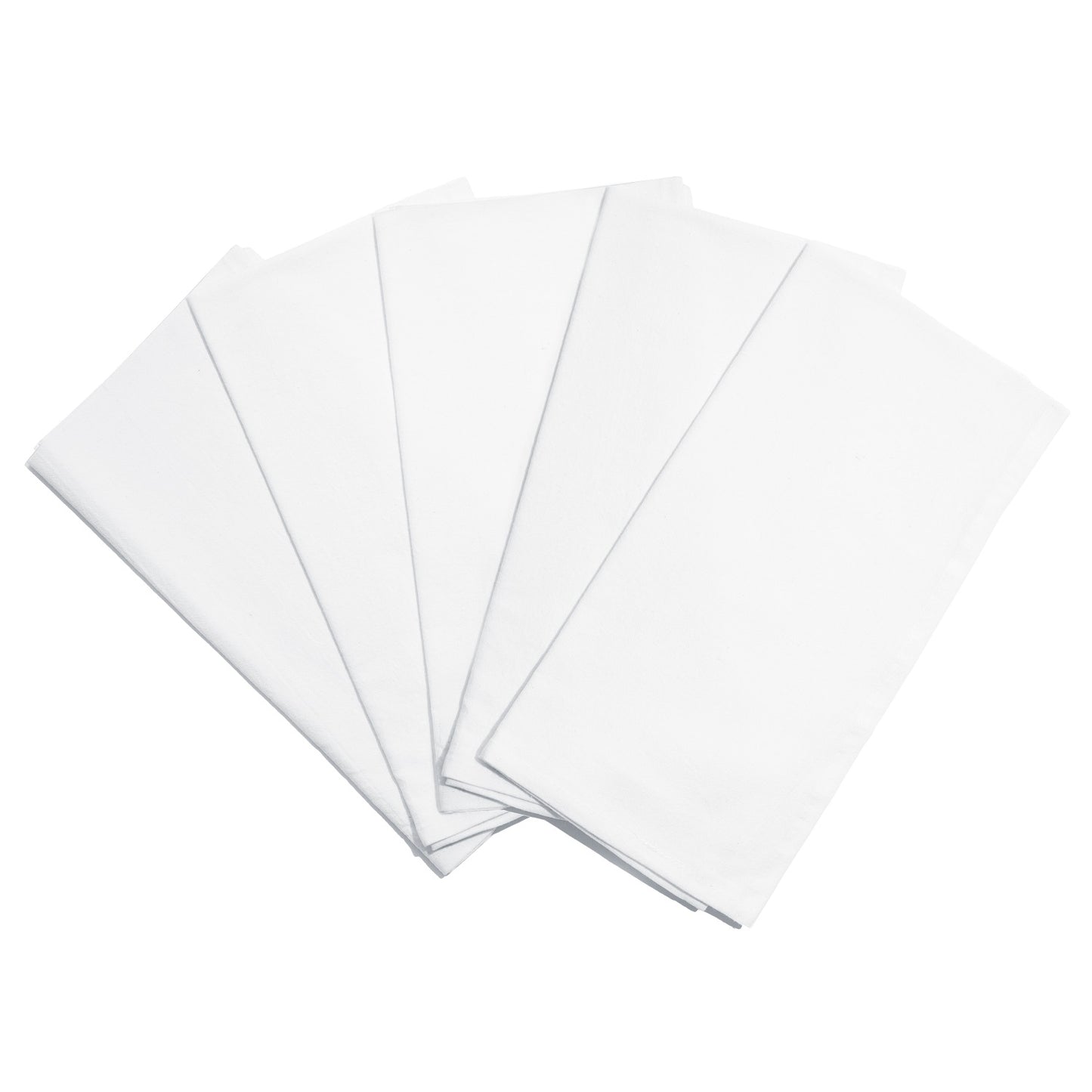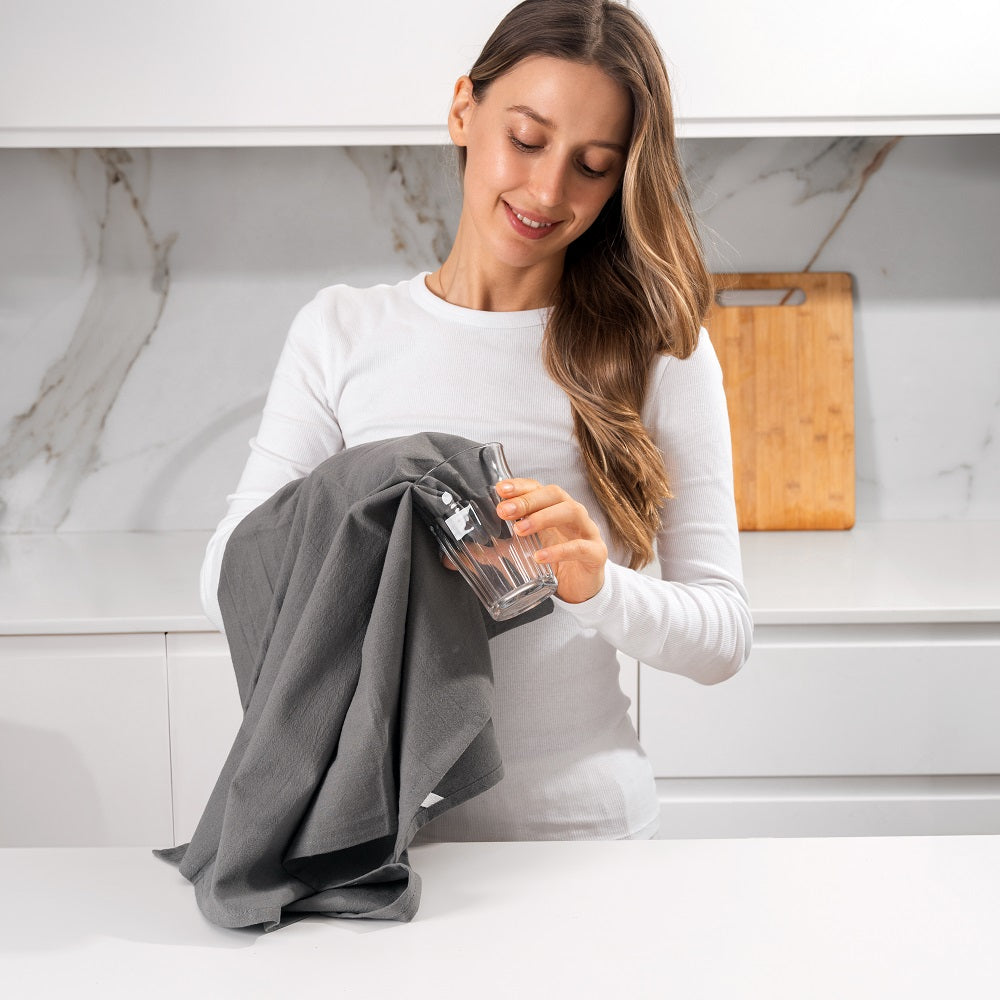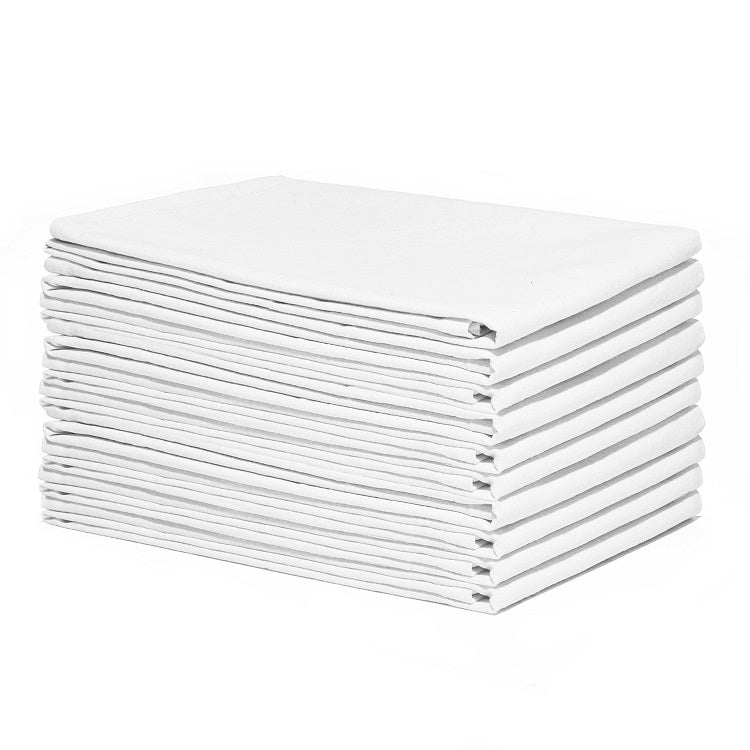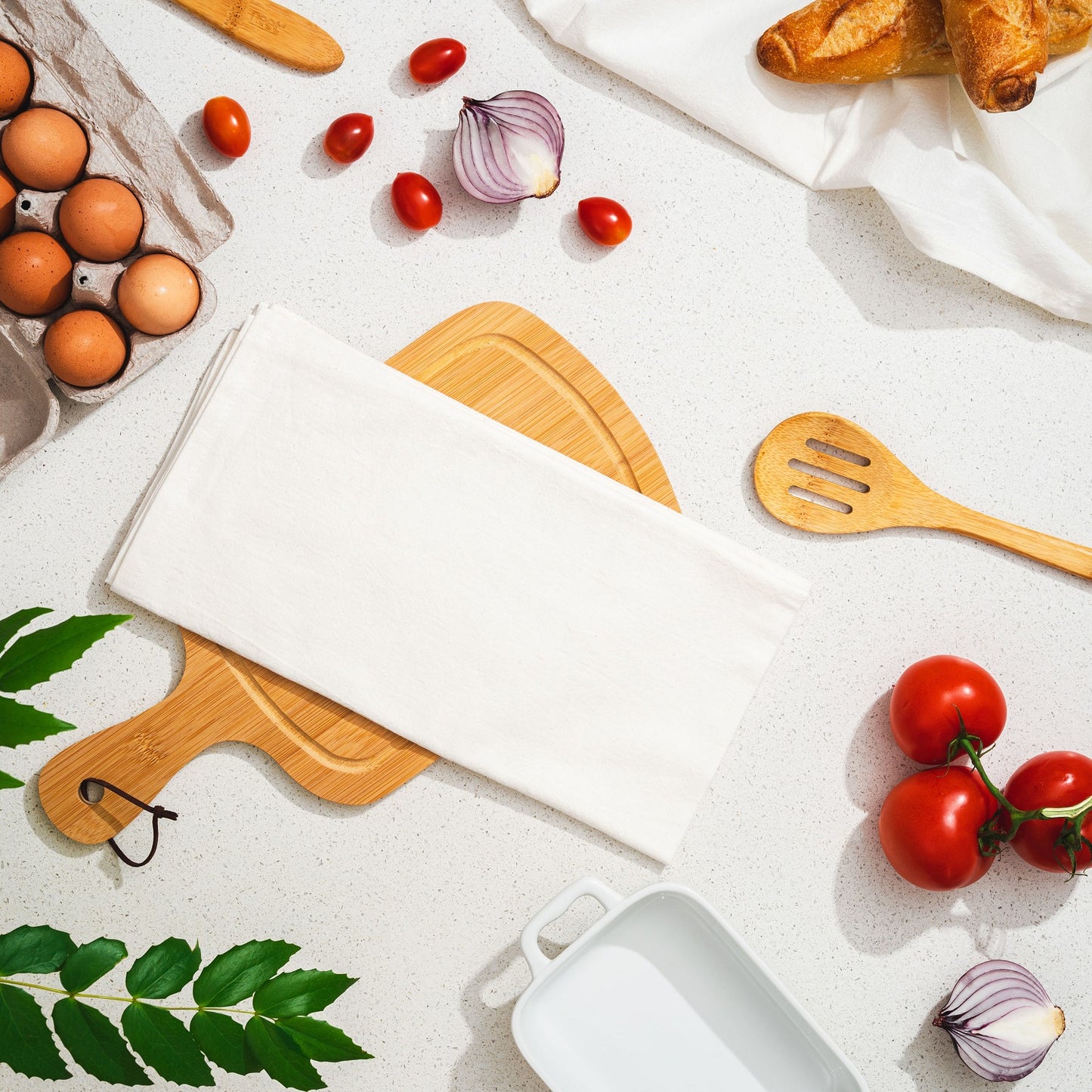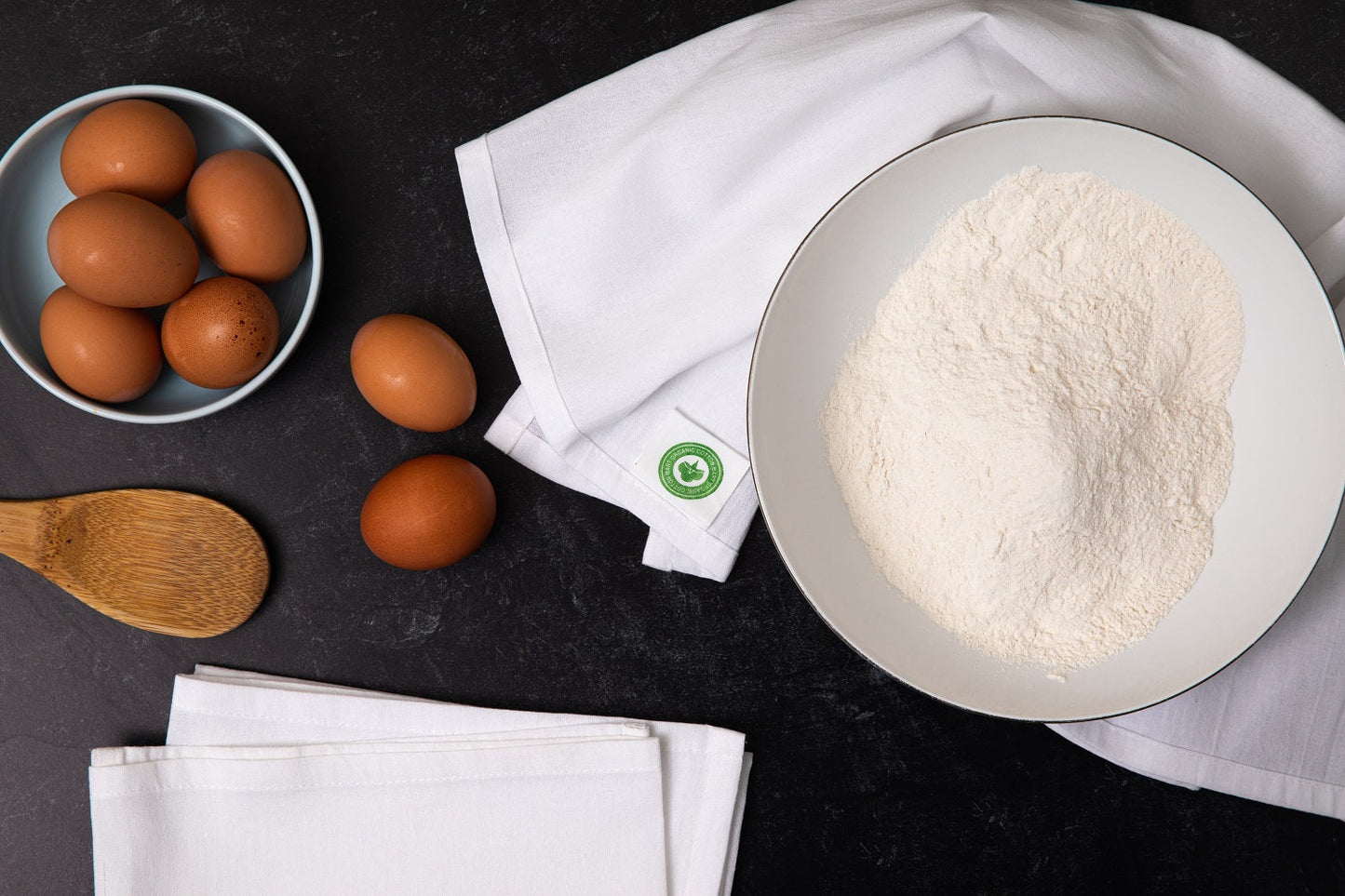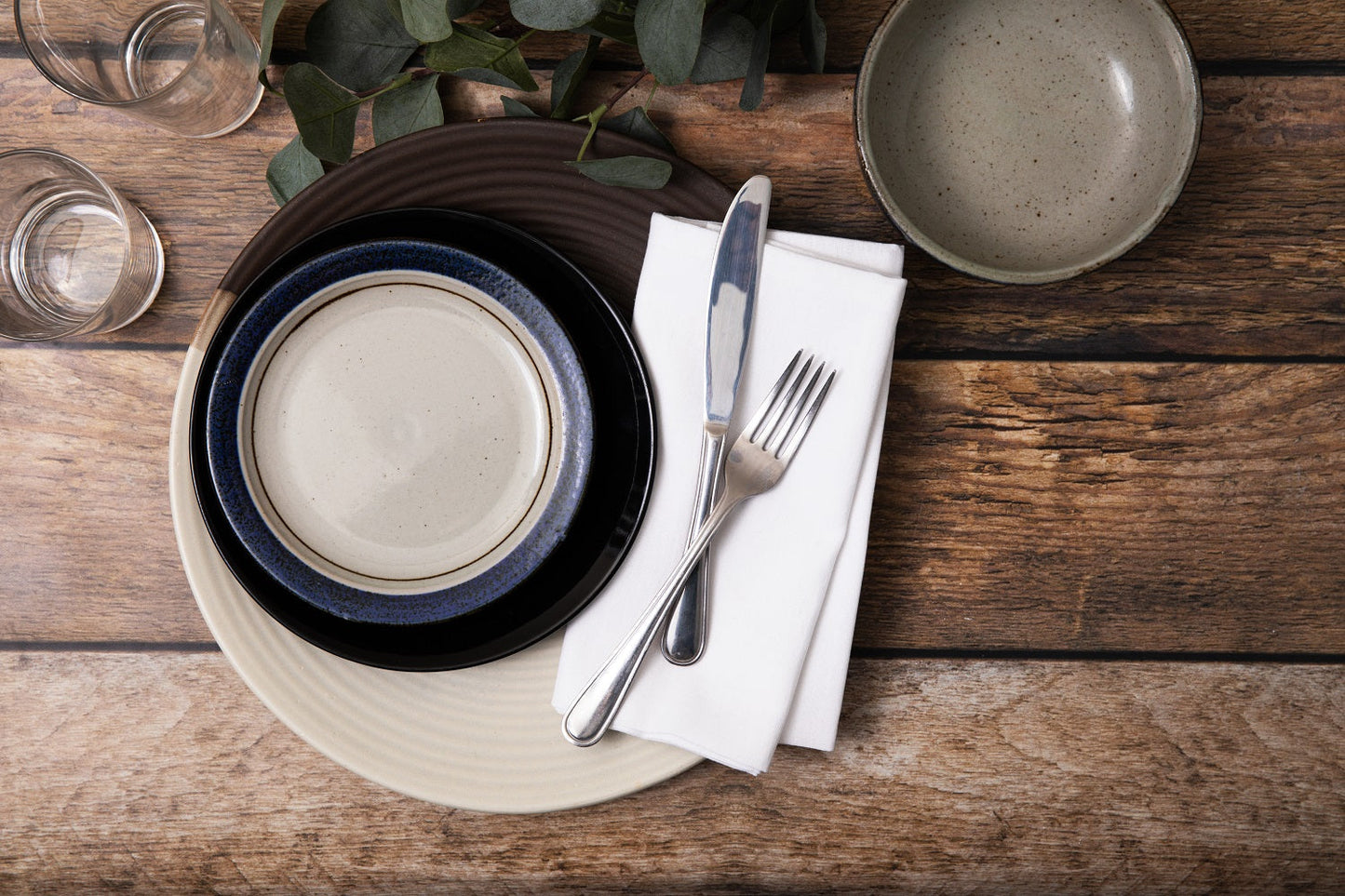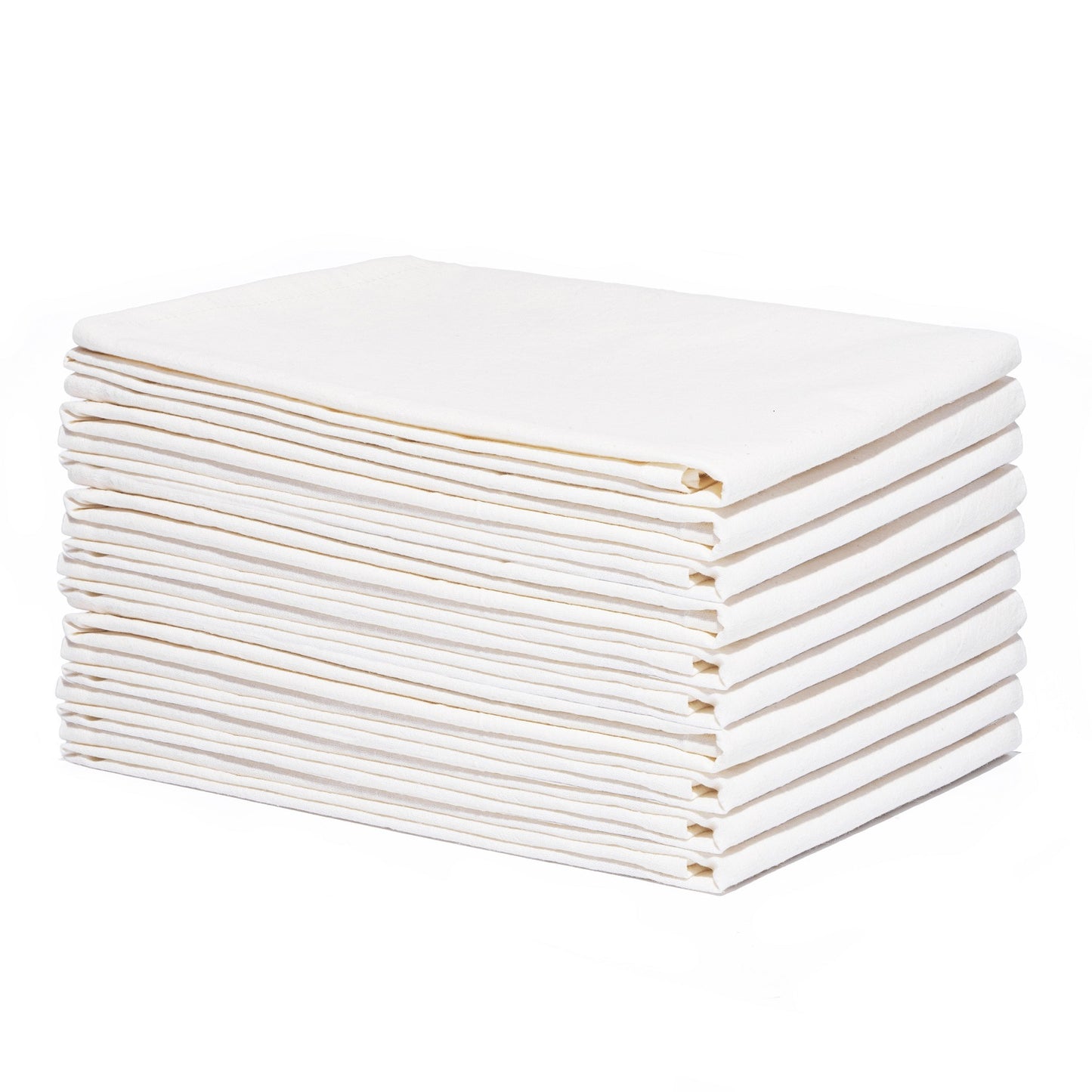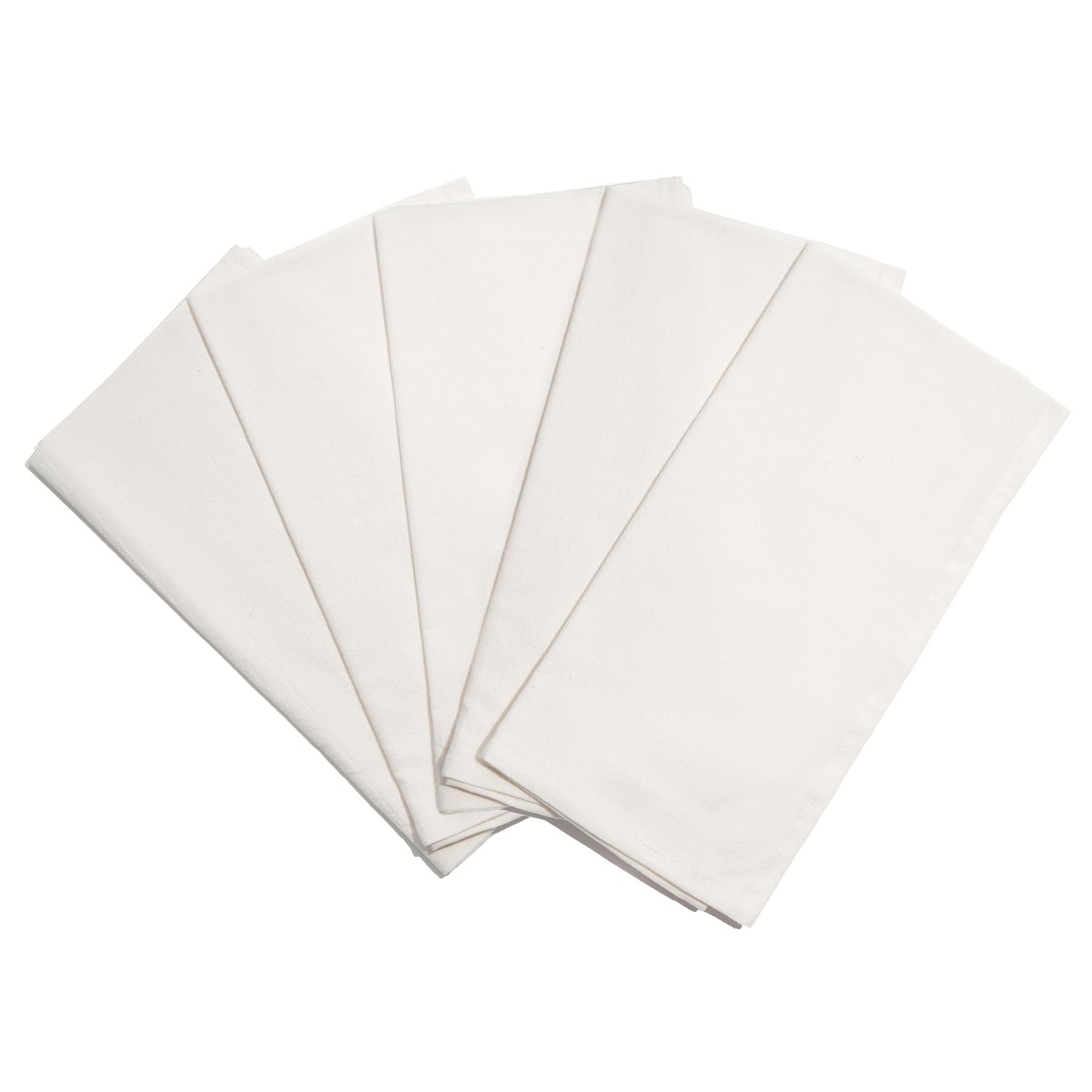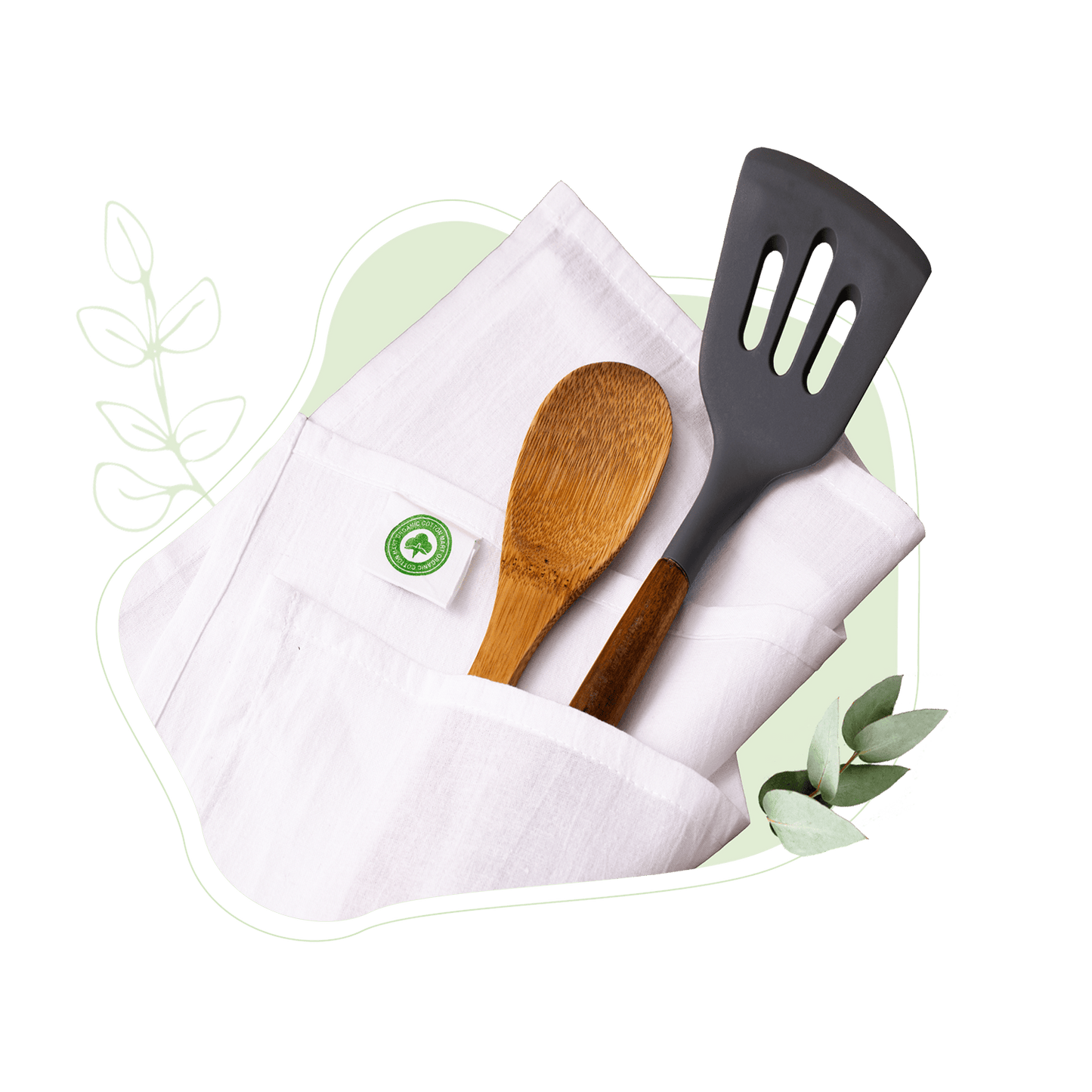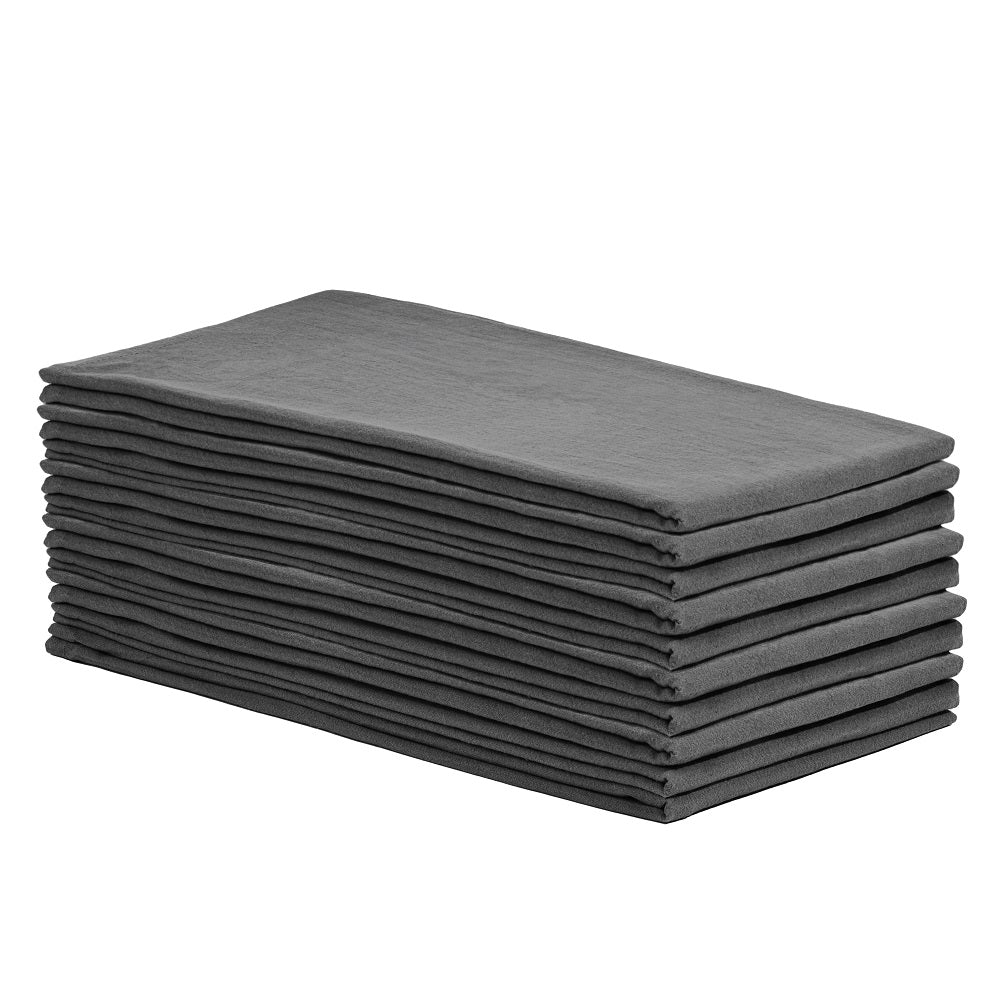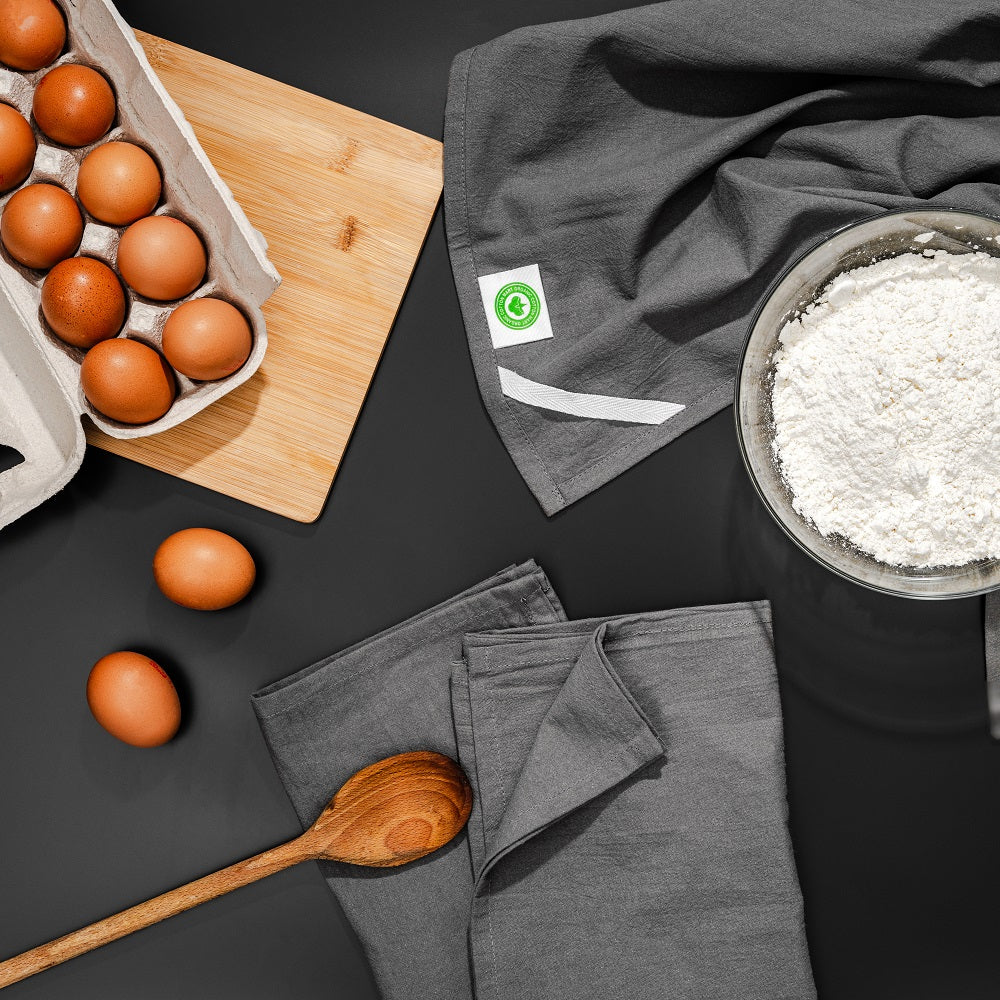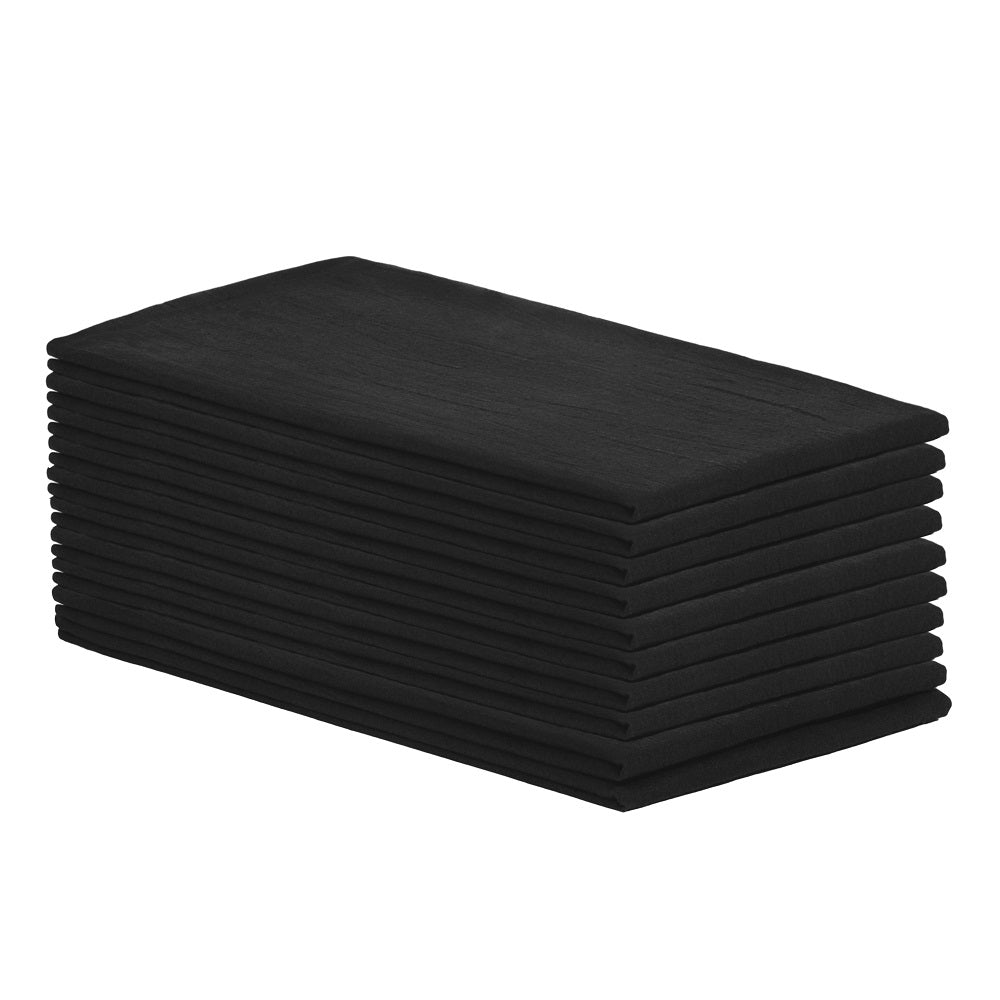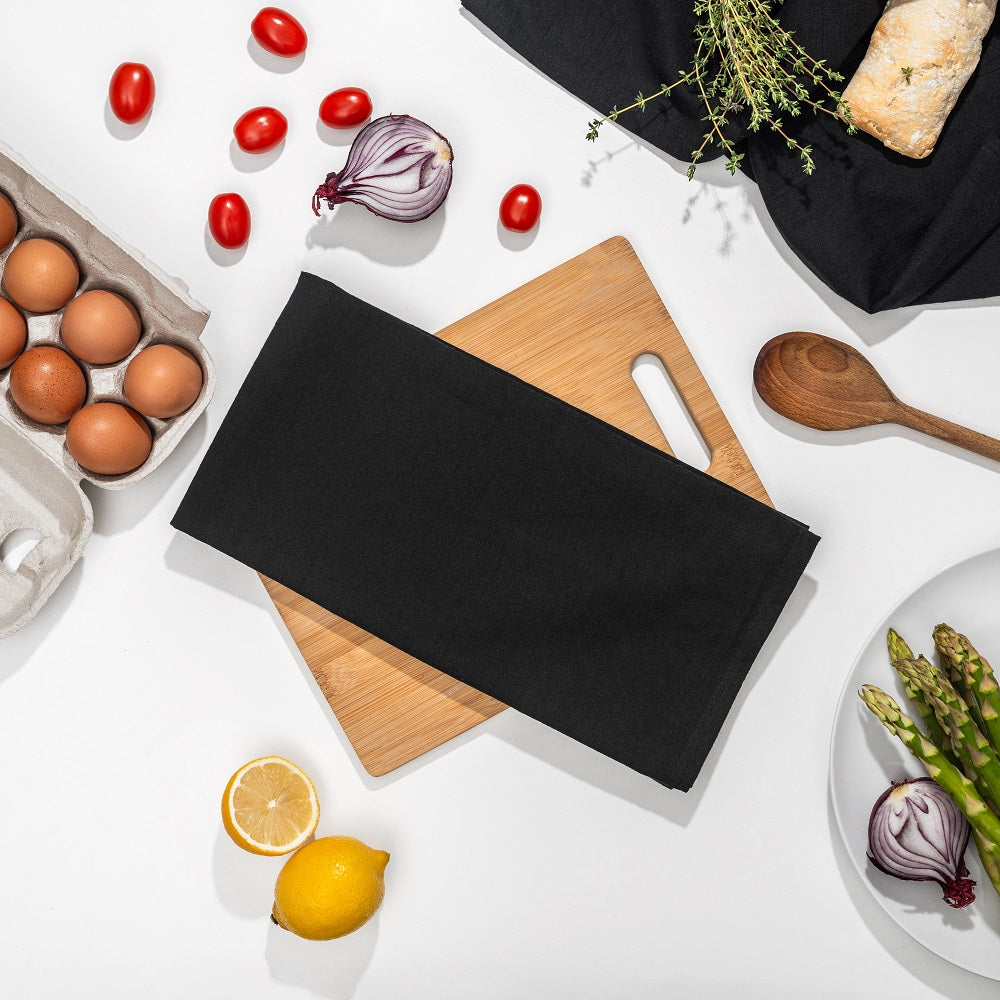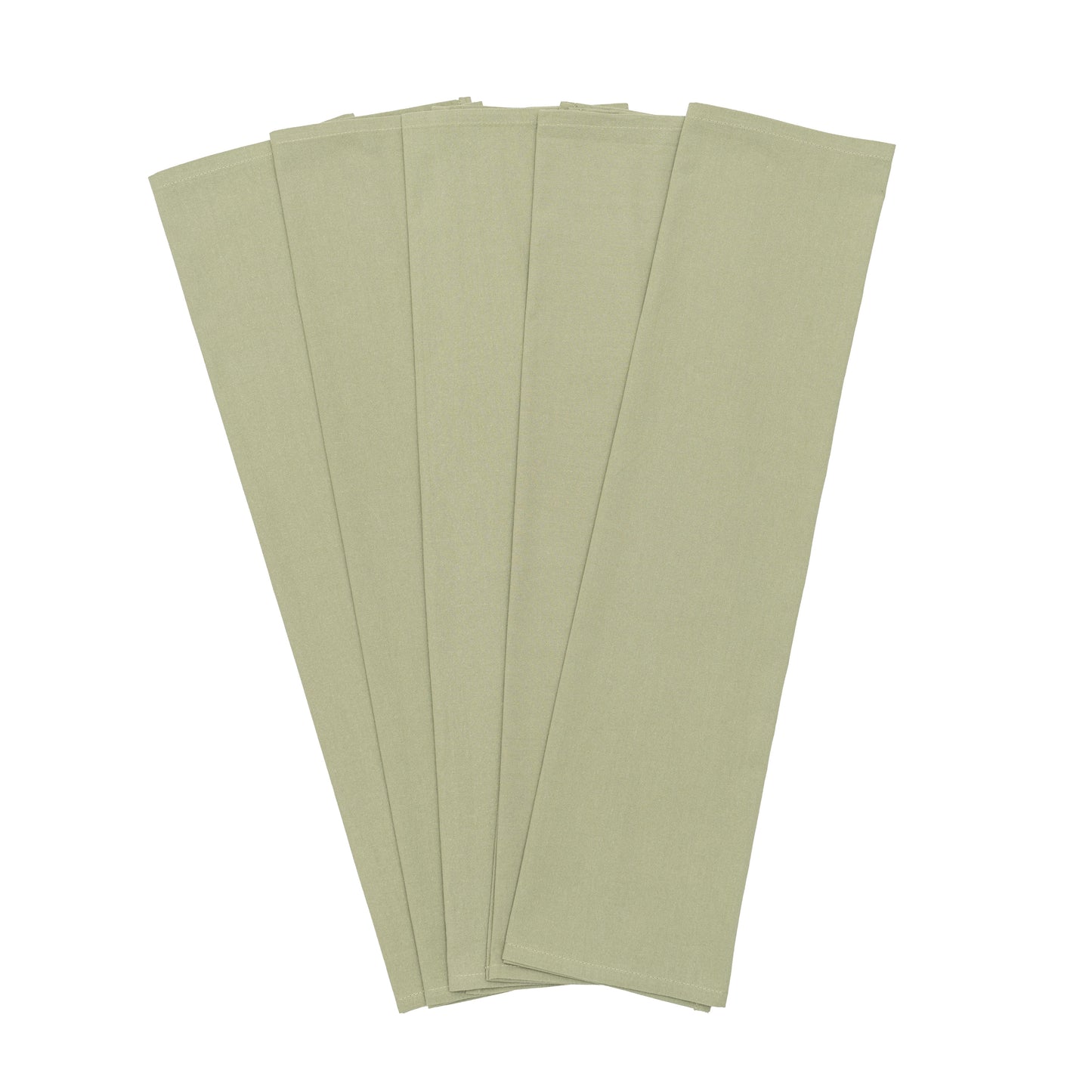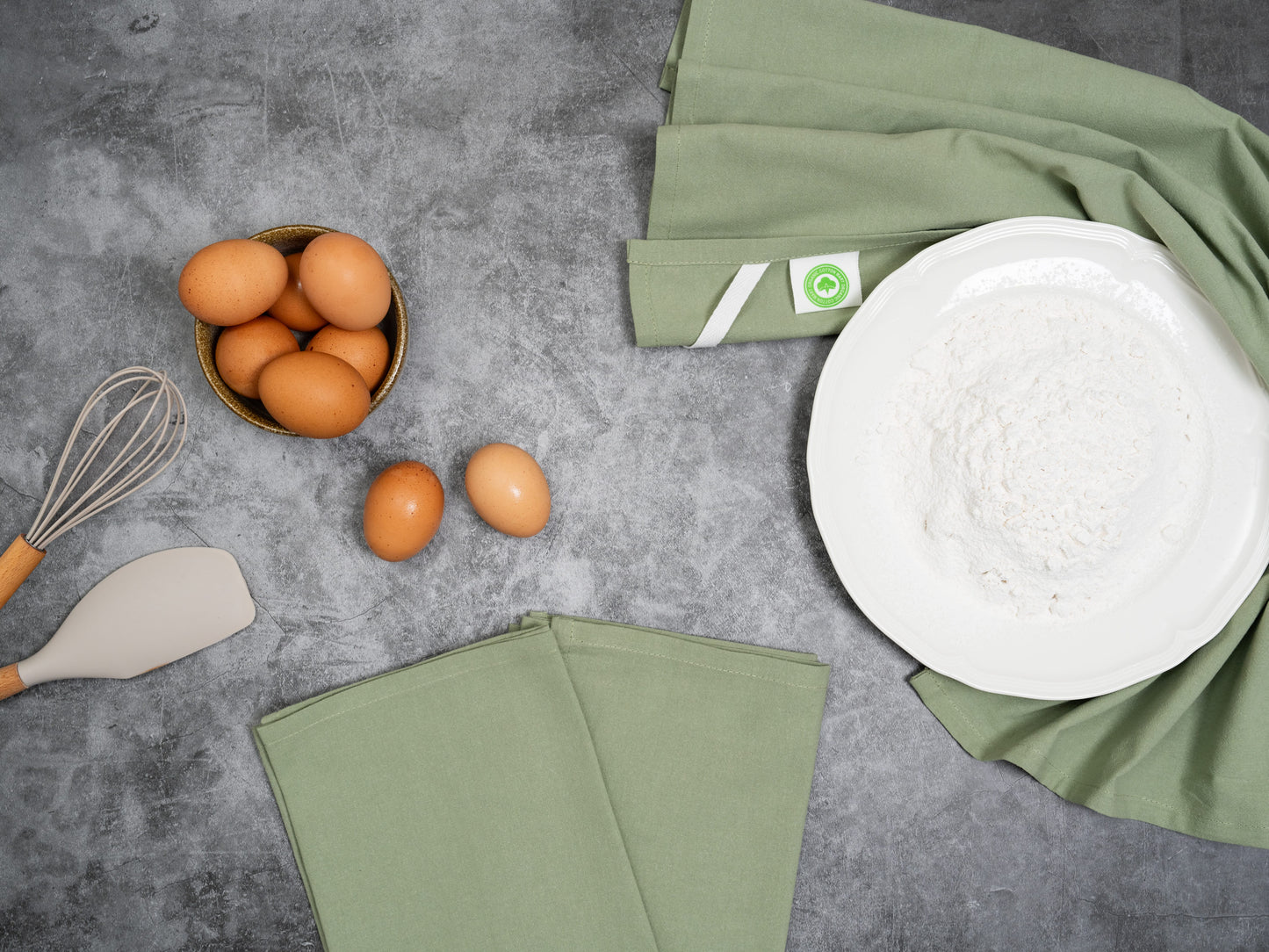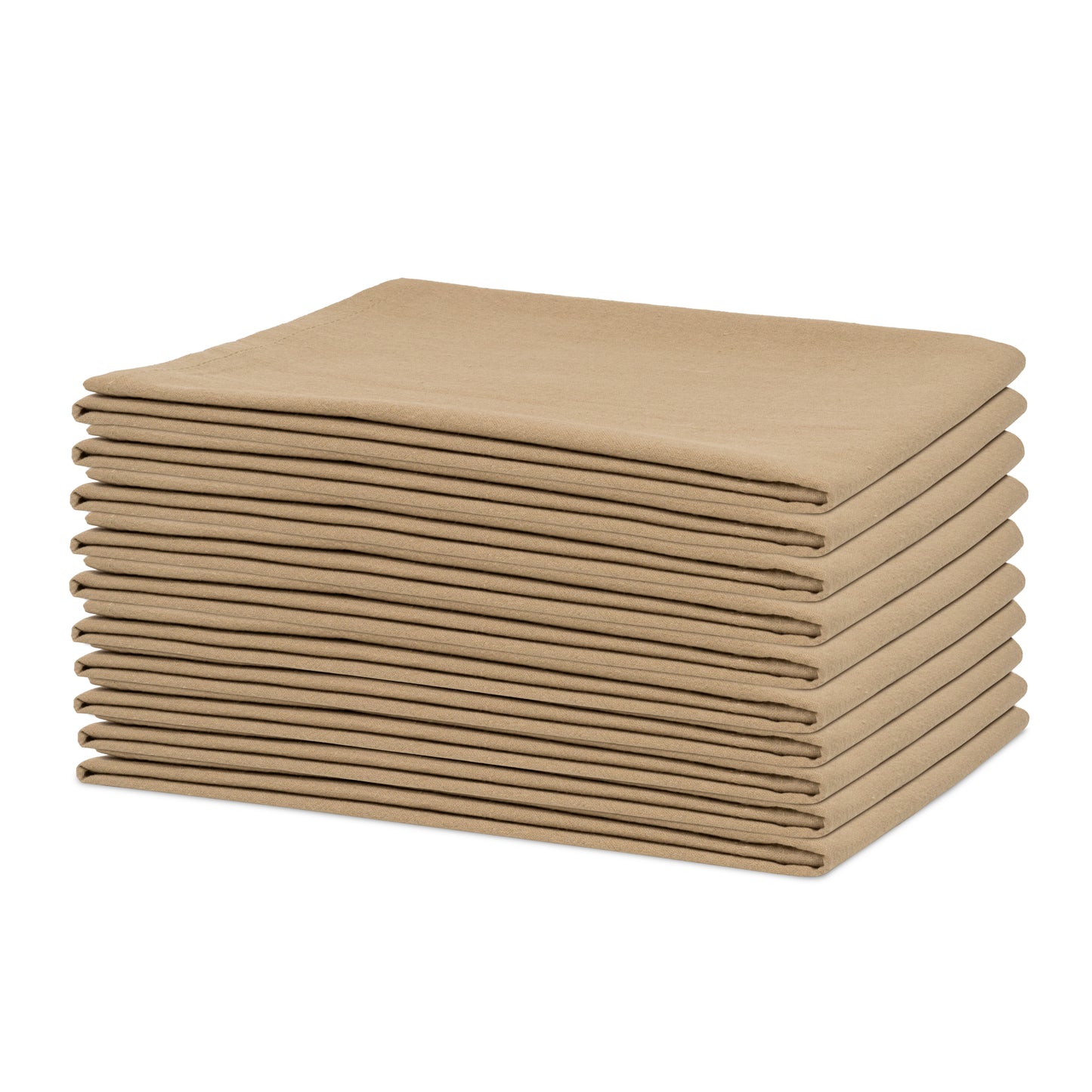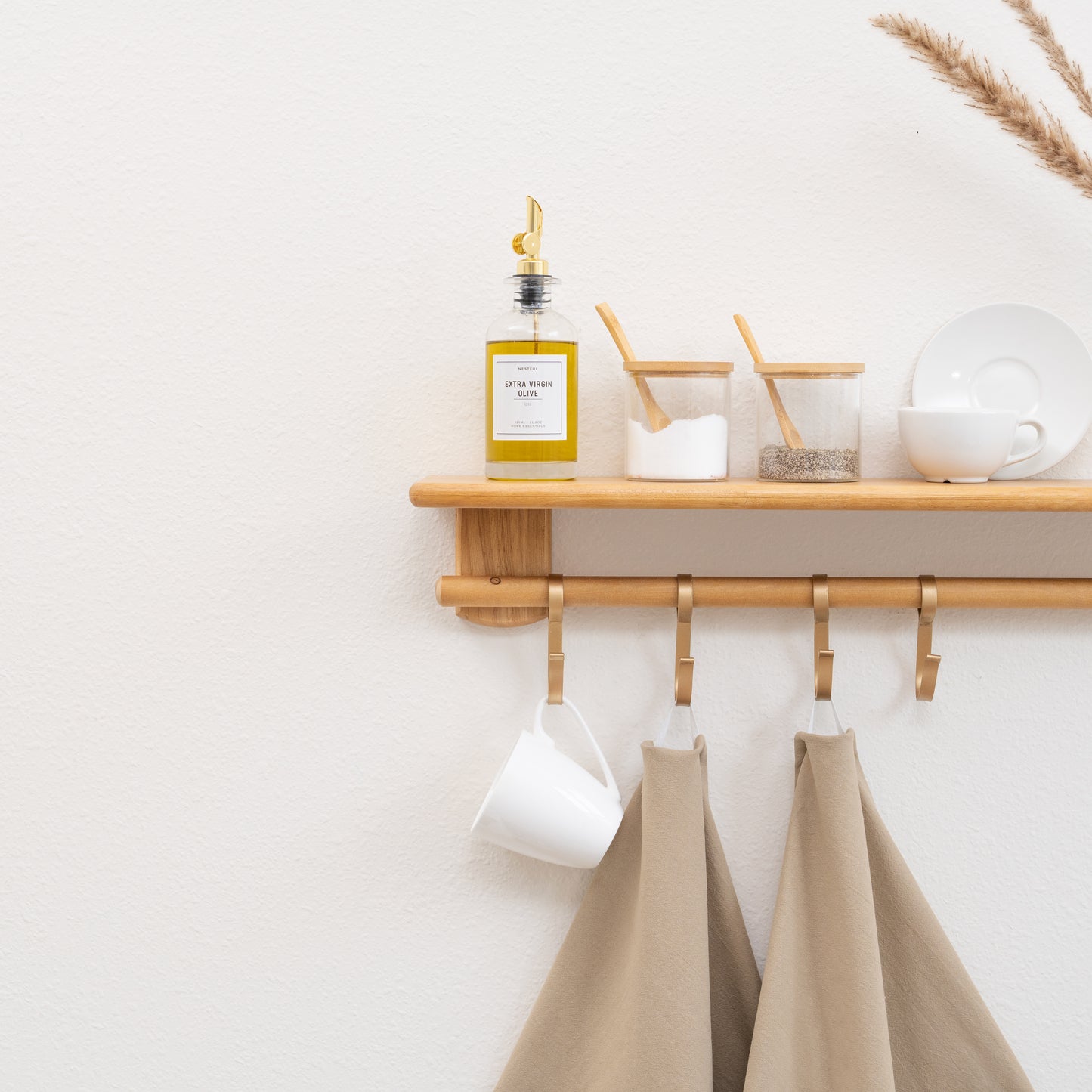Whenever we hear the word “towel” a thick, fuzzy, terry fabric usually comes to mind.
A tea towel, however, is something quite different. It’s thinner, softer, and smaller than a bath towel, typically woven from pure cotton or linen fibers.
A tea towel isn’t something new. In fact, they’ve been around since the 18th century.
From drying dishes to polishing silverware to making colorful clothing, there’s no limit to the versatility of these towels.
Scroll down to learn more about this do-it-all kitchen cloth and its countless uses.
Table of Contents
- What is a Tea Towel?
- Why is it Called a Tea Towel?
- Is a Tea Towel the Same as a Flour Sack Towel?
- Ideal Size of Tea Towel
- Why Choose Tea Towels Made from Organic Cotton?
- What is a Tea Towel Used for? 10 Uses of this Fabulously Functional Cloth
- 1. Drying Crockery and Cutlery
- 2. Making Reusable Bags
- 3. DIY Art Uses
- 4. Hair Drying Towel for Luscious Curls
- 5. Drying Herbs and Leafy Greens
- 6. Straining Stocks and Sauces
- 7. Making Warm and Cold Compress
- 8. Textile Uses
- 9. Keeping Baked Goodies Oven Fresh
- 10. Kitchen Cupboard Liner
- Where to Buy Tea Towels
- How to Care for Tea Towels
- Final Thoughts
What is a Tea Towel?
A tea towel is an absorbent, quick-drying dishcloth made from 100% woven cotton or linen.
Available in a wide array of shapes, sizes, patterns, and designs, this is a must-have utility cloth to have around the house. Here’s why:
-
Thin and Absorbent: Tea towels are thin and breathable with good absorbability, especially the ones that are made from linen. These are finer and more delicate than your average kitchen towel while being thicker with a looser weave than nut milk bag and cheesecloth.
-
Lightweight and Long-Lasting: Tea towels are lightweight yet durable pieces of cloth woven from plant-based fibers such as cotton or linen. They arrive soft and become even softer no matter how often you toss them in the washer.
-
Soft and Fuzz-Free: The softness of a tea towel and the fact that it doesn’t leave any fuzz or lint behind makes it perfect for drying expensive crockery and polishing silverware.
- Eco-Friendly: Tea towels are washable and reusable, making them a greener household tool compared to paper kitchen towels. If you’re an eco-conscious soul like us, tea towels made from organic cotton (more on that later) are perfect for you.
Why is it Called a Tea Towel?
Back in Victorian English society, a tea towel was more of a status symbol used in wealthy households to insulate teapots, cover baked goodies or wipe down any leaks or spills during teatime. Over the years, people have discovered new and creative uses that extend beyond cleaning and insulating. We’ll be telling you about ten of them today.
Is a Tea Towel the Same as a Flour Sack Towel?
Yes and No. Sure, they’re used interchangeably now to describe a flat-woven piece of soft, absorbent, lint-free cloth, but that wasn’t the case in the earlier days.
In the 1800s, flour sack towels were thicker, coarser dishcloths repurposed from plain cotton sacks that carried essential supplies such as flour and sugar.
“Tea towel,” on the other hand, was a term used to describe the small dainty cloth that accompanied the tea serving tray.
To learn more about flour sack towels check out our guide on what are flour sack towels.
Related Article: Tea Towel vs Dish Towel? Find Out How They’re Different
Ideal Size of Tea Towel
Tea towels are available in a vast range of designs, styles, and patterns. They’re highly functional and easy on the eyes. The size of an average tea towel varies from 16” x 28” to 18” x 30” - more or less the size of a standard hand towel.
Why Choose Tea Towels Made from Organic Cotton?
Tea towels made from certified organic cotton are non-toxic and planet-friendly. This variety of cotton is sown, grown, and woven without any chemicals. Plus, the amount of water and energy required to cultivate organic cotton is substantially lower than the conventional water-guzzling cotton crop.
For something that’s often used around food and kitchen items, you’d want it to be ultra-safe - an unbleached organic cotton tea towel is all that and more.
What are Tea Towels Used for?
A tea towel is still used to dry fine china and clean cutlery, but it doesn’t stop there. There are so many more ways this workhorse will add convenience to your day-to-day life.
-
1. Drying Crockery and Cutlery
Spills, leaks, or cookie crumbs - this absorbent and hardy cloth will clean up any mess within seconds. Not only that - Its thin and densely woven texture makes it perfect for cleaning and polishing precious tableware. Plus, you won’t have to worry about any traces of fuzz or lint on your fine china. When you’re done with the chores, simply throw the towels in the washer. You’ll be amazed by how well they hold up, wash after wash.
-
2. Making Reusable Bags
If you’re one of those who love repurposing and upcycling items instead of discarding them, here’s a tip: use your tea towels to make dust bags for handbags, cotton produce bags or cloth gift bags. You’ll find plenty of online tutorials to help you with that. Get creative - embellish, add pops of color and patterns to make it one of a kind.
Related Article: 30 Eco-friendly Alternatives to Single-use Plastics.
-
3. DIY Art Uses
You’d be surprised to know that the famous painter Vincent Van Gogh often relied on tea towels as a canvas for several of his iconic works. These flat woven pieces of cotton can act as a base to showcase your embroidery skills by turning them into decorative pieces for your home.
-
4. Hair Drying Towel for Luscious Curls
For our curly-haired readers who struggle with drying their hair the right way, know that tea towels are your friend. Regular bath towels soak up too much moisture, leaving the hair drab and frizzy. Instead, use soft cotton tea towels to scrunch dry your hair to add definition and bounce to the curls. Tea towels are gentler and less abrasive to the hair in comparison to their terry cloth counterpart.
-
5. Drying Herbs and Leafy Greens
Drying aromatic herbs is incredibly easy with tea towels. After washing and trimming the herbs, pat them dry and spread them out on this breathable, flat-woven cloth. Depending on the room conditions, they’ll take anywhere from a few days to over a week to dry. For leafy greens, use tea towels to pat dry to keep them crispy and fresh.
Related Article: 50 Tips on How to be More Sustainable.
-
6. Straining Stocks and Sauces
Don’t have cheesecloth around and have some straining to do? Look no further than a tea towel. Tea towels are one of the best cheesecloth alternatives that you will be able to find.
These towels are made from tight-knit cotton that lets the liquid pass through while holding on to the solid bits. However, the thicker texture and finer weave than cheesecloth mean you’ll need to press hard to make sure the juice is properly squeezed out.
If you don't have any, you can explore our latest collections of reusable straining cotton bags. -
7. Making Warm and Cold Compress
An absorbent cotton cloth such as a tea towel can double up as a pain-relieving compress for sore muscles and swelling. Here’s how - dampen the cloth in water and wring out the excess moisture. Apply it to the affected area directly for instant relief. You can also use tea towels to make a stress-busting herbal compress by soaking them in herb infusions (chamomile, lavender, and peppermint) for a soothing dose of aromatherapy whenever you crave some.
-
8. Textile Uses
The world saw many examples of the proverb “Necessity is the mother of invention” during the Great Depression. Those trying times pushed people to come up with multiple uses for every item to make sure nothing went to waste. Homemakers and sewists began using tea towels and flour sacks to make children’s clothing, table napkins, embroidered artwork, pillow covers, and much more.
-
9. Keeping Baked Goodies Oven Fresh
Besides drying expensive crockery and covering teapots, one of their original uses was keeping warm loaves fresh. It was done by wrapping bread, scones, or dinner rolls in this cloth right after baking to keep the items soft with their crust intact.
For a charming and practical addition to your kitchen, explore our plaid cloth napkins made from organic cotton. Perfect for wrapping your freshly baked goods, they add a touch of style to your culinary creations. Shop now and bring warmth to your table!Related Article: How to store bread? 10 Bread Storage Ideas to Use.
-
10. Kitchen Cupboard Liner
Line your kitchen shelves with these cotton towels to absorb water drips and moisture from washed utensils. Not only will they protect your cabinet from wearing off too soon, but they’ll also make your kitchen more presentable. Don’t forget to wash your tea towels frequently to keep them hygienic and smelling fresh.
Where to Buy Tea Towels?
Authentic and organic cotton made tea towels are sold by us here at Organic Cotton Mart. You can also find our organic tea towels on Amazon.


